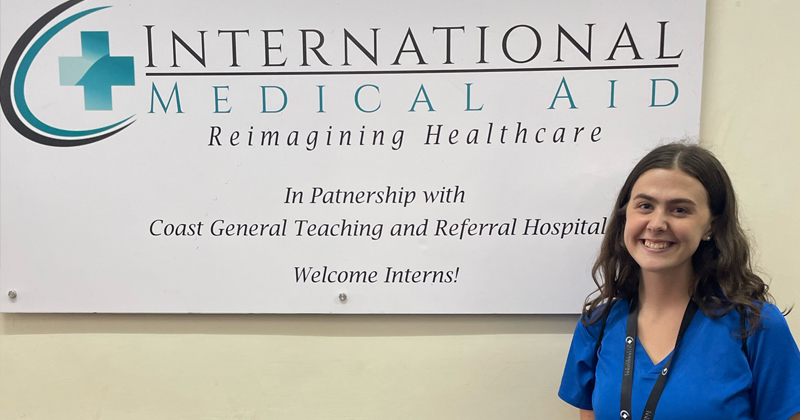
“They looked like typical babies to me, but malnutrition is measured by height, weight and a mid-upper arm circumference assessment,” Hamelin said. “There are also levels of malnutrition, but most of the cases we dealt with were severe. Some patients you could see had very tiny arms; it was heartbreaking.”
Hamelin remembers a mother who came in with her child, who was between 6 and 8 months old and was born prematurely. In Kenya, it’s typical for a mother to stop breastfeeding at six months, and formula is rarely used to supplement.
“Her child had drastically dropped in weight, and we were a little alarmed. But the mother couldn’t afford a lot of extra food, so whatever they were eating was what the baby was eating. It was a lot of grains and not enough protein.”
Dietitians and doctors at the teaching hospital spoke to patients in Swahili. Afterward, they’d pull Hamelin aside and debrief her in English.
“They took the time to ensure I understood things,” she said. “In that case, the dietitian encouraged the patient to mix eggs into oatmeal as an easy protein, but the mother said she couldn’t afford that.”
The hospital dispensed Formula 75 and Formula 100, high-calorie therapeutic milks used to treat severe, acute malnutrition. After some weight was gained, the baby was provided a peanut-based paste that was high in both calories and protein.
The incident opened Hamelin’s eyes to the inequities within the healthcare system, even abroad.
“Developing babies need protein, but affordability was an obstacle I wasn’t prepared for, so it was interesting to see how that was handled,” Hamelin said.
The experience made her appreciate clinical nutrition more.
“While I see myself practicing nutrition in more of a public health or community outreach setting, I appreciate what dietitians do and can appreciate the clinical aspects so much more.”
